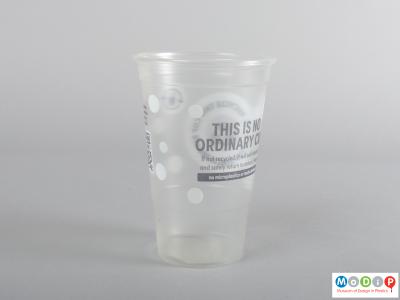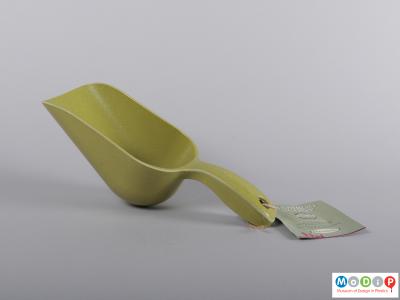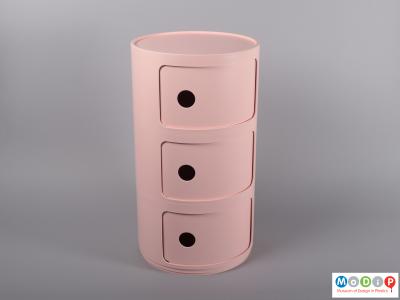Not to be confused with bioplastics i.e. plastics made from renewable biomass resources such as sugarcane or corn, biodegradable plastics are made from materials that have chemicals added to cause the plastic to break down quickly when exposed to air, sunlight, heat or moisture, triggering micro-organisms to become active. There is a train of thought that labelling plastics as biodegradable encourages people to think of plastics as disposable rather than a resource to be valued. However, the issue of plastic pollution is now so problematic that manufacturers are making great efforts to develop materials that have much less impact on the environment at the end of the object’s useful life.
The Flexy-glass beaker (1) is made from polypropylene that has been engineered to degrade without leaving behind toxins or microplastics. It can be recycled with other polypropylene waste but if carelessly disposed of in the environment it will harmlessly self-destruct, breaking down over time when exposed to light, air and moisture, turning into a wax-like structure that draws in microbes and bacteria.
The impermanence of the material from which it is made is a feature of the Pleco pleated tote bag (2) designed and produced by kna plus, Japan. It is made from polylactic acid (PLA) fibre derived from corn, and has a relatively short life expectancy. The makers claim that it will naturally decompose into the soil and is non-toxic when burned. As a guide they say that with heavy use the bag will last about a year with regular use, up to a maximum of six years if never used.
Some items are marketed as being compostable without specific indications about the exact conditions required. However, the Haxnicks brand garden scoop (3), made from a compostable bamboo, rice and natural resin, gives detailed instructions for home composting. The design classic Componibili (4) has had a material makeover. This example uses fully biodegradable biomaterial from renewable resources. Derived from agricultural plant waste that cannot be used to produce food for humans or animals, the material is created with the addition of micro-organisms that produces a biomass similar to plastics. At the end of its life, the unit should be industrially composted.




